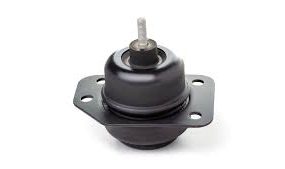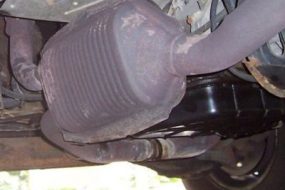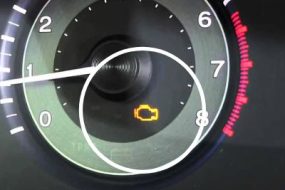
As far as any vehicle is concerned, the water pump serves a major role that cannot be overemphasized. As part of the cooling system, the water pump ensures that coolant is properly circulated through the engine to enable it to operate within the ideal temperature range.
Over time, water pumps can wear out or fail, leading to overheating and potential engine damage. This time, a replacement is needed.
When it becomes necessary to replace the water pump, it’s an opportune moment to inspect and replace several other components within the cooling system. Therefore, when replacing a water pump, what else should you replace?
What to replace when replacing a water pump are coolant, thermostat, coolant hoses, belt tensioner, serpentine belt, idler pulleys, timing belt or chains, water pump gasket and seals, fan clutch or electric fan, radiator and radiator cap, etc.
When Replacing a Water Pump What Else Should You Replace?
Here are the things you should replace when replacing a water pump and why you should replace them.
1. Coolant
One of the most crucial components to replace alongside a water pump is the coolant itself. Over time, coolant can break down, become contaminated, or lose its effectiveness.
Replacing the water pump is the perfect time to drain the old coolant and refill the system with fresh, high-quality coolant. This not only ensures optimal cooling performance but also prevents overheating issues down the line.
2. Thermostat
The thermostat plays a pivotal role in regulating the flow of coolant within the engine. It ensures that the engine maintains its ideal operating temperature.
If the thermostat is old, worn, or failing, it’s wise to replace it in conjunction with the water pump. This ensures consistent temperature control, preventing overheating and potential engine damage.
3. Coolant Hoses
Coolant hoses are responsible for carrying coolant between various components in the cooling system. Over time, these hoses can become brittle, develop cracks, or soften, potentially leading to leaks.
Inspect all coolant hoses for signs of wear or damage, and if you notice any issues, replace them. Neglecting old hoses can lead to cooling system problems and potential engine damage in the future.
4. Belt Tensioner and Serpentine Belt
In many vehicles, the water pump is driven by the serpentine belt. Over time, the belt and its tensioner can wear out.
Replacing these components along with the water pump is a cost-effective measure. It ensures the reliability of the entire system and prevents potential issues arising from a worn-out belt or tensioner.
5. Idler Pulleys
Idler pulleys help guide the path of the serpentine belt. Over time, these pulleys can also wear out, leading to improper belt alignment and potential issues.
Replacing the idler pulleys alongside the water pump and related components ensures proper belt operation and extends the life of the new water pump.
6. Timing Belt or Chain
In some vehicles, the water pump is driven by the timing belt or chain. If your vehicle falls into this category and the timing belt or chain is due for replacement, it’s highly recommended to replace both components simultaneously.
A broken timing belt or chain can result in severe engine damage, making this a crucial safety precaution.
7. Gaskets and Seals
Always replace the gaskets and seals associated with the water pump. This includes the water pump gasket, O-rings, and any other sealing components. A proper seal is essential for preventing coolant leaks and maintaining the required pressure within the cooling system.
8. Fan Clutch or Electric Fans
The cooling system’s operation can vary depending on the design of your vehicle. Some vehicles use a fan clutch, while others rely on electric fans.
Inspect these components for signs of wear, and replace them if needed. Proper fan operation is crucial for cooling your engine, and a well-functioning fan can help maintain optimal temperatures.
9. Radiator Cap
The radiator cap is a critical part of the cooling system, as it maintains pressure within the system. If the cap is old, damaged, or malfunctioning, it can lead to overheating problems.
Replacing it during the water pump replacement is a simple and cost-effective precaution that can help prevent future issues.
10. Radiator
While not always necessary, if your radiator is old, corroded, or damaged, replacing it while the cooling system is open for a water pump replacement can enhance the overall efficiency of your cooling system. A new radiator ensures better heat dissipation, which is crucial for optimal engine performance.
These are the things that should be replaced while replacing the water pump. The idea is to ensure that the newly installed water pump functions at its best to ensure the engine is at its optimal performance.
However, there are a few other things you must do after a water pump replacement, they are:
- Cooling System Flushing: Before refilling the cooling system with fresh coolant, consider flushing it to remove any contaminants or debris. This helps maintain the integrity of the new water pump and other cooling system components. A clean system is more efficient at maintaining proper engine temperature.
- Pressure Test: After completing the water pump replacement and refilling the cooling system, perform a pressure test to identify any potential leaks or issues, ensuring that the system is sealed properly and operates effectively. It’s a valuable preventive measure to avoid future problems.
- Bleeding Air: Properly bleed the air from the cooling system after replacing the water pump and refilling it with coolant. Air pockets can hinder the circulation of coolant and affect cooling performance. Proper bleeding ensures that all components work harmoniously to maintain the ideal engine temperature.
- Inspect for Additional Damage: While replacing the water pump and related components, closely inspect the surrounding area for signs of damage or wear. Fixing these issues proactively can save you time and money in the long run and ensure the longevity of your engine.
- Maintenance Records: Keep a detailed record of the date and mileage at which you replaced the water pump and other related components. This information helps you plan for future maintenance and provides valuable insights into your vehicle’s history, allowing for proactive measures to ensure reliability.
Conclusion
Replacing a water pump in your vehicle is not just a matter of swapping out the old pump with a new one. It’s an opportunity to refresh and optimize the entire cooling system, preventing potential issues in the future.
By considering the additional components and maintenance tasks outlined in this article such as replacing the coolant, radiator, coolant hoses, thermostat, serpentine belt, and tensioner, etc, alongside the water pump, you can ensure that your vehicle’s cooling system functions optimally, promoting the engine longevity and reliability.









